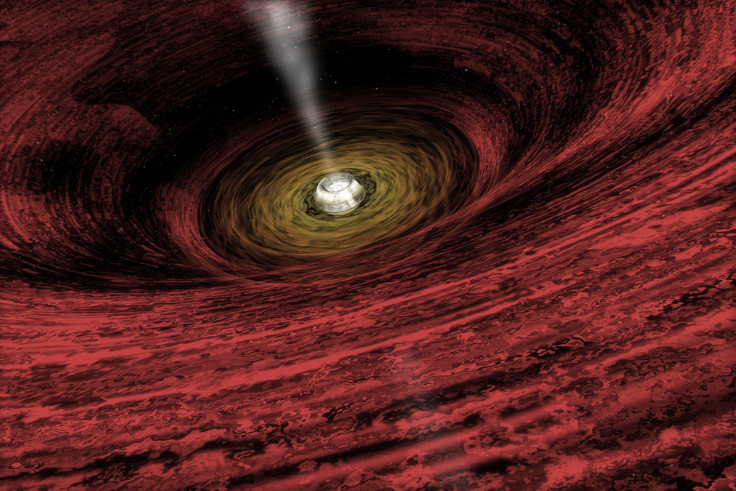Dormant black hole suddenly becomes active to devour passing star; X-rays from inner part of disk baffle scientists

Astronomers from the University of Michigan and University of Maryland have for the first time mapped the flow of gas near a supermassive black hole, Swift J1644+57, that woke from its dormant state to destroy and devour a star that drifted close to it. The astronomers are the first to document X-rays bouncing from deep within the walls of the black hole’s newly-formed accretion disk after a tidal disruption event.
The accretion disk is formed of puffy, giant cloud of shredded star that is circling the black hole waiting to be swallowed. The researchers’ methodology may help in devising reliable measurements of black hole spin. The study was published in journal Nature.
The destruction event occurred around 3.9 billion years ago even though the X-rays produced during the event reached Earth only in 2011. The rays were detected by NASA’s Swift Satellite. Flares near the million-solar-mass black hole produced the X-rays that bounced off the accretion disk and revealed its structure. The glow that was detected happened when the X-rays excited iron ions in the swirling gas near the supermassive black hole. The disk is made up of stellar debris falling towards the black hole.
“While we don't yet understand what causes X-ray flares near the black hole, we know that when one occurs we can detect its echo a couple of minutes later, once the light has reached and illuminated parts of the flow. This technique, called X-ray reverberation mapping, has been previously used to explore stable discs around black holes, but this is the first time we've applied it to a newly formed disc produced by a tidal disruption,” University of Maryland researcher and lead author Erin Kara said in a NASA statement.
The researchers were surprised by the high energy X-rays arising from the inner part of the disk. The astronomers had initially thought that most of the emission originated from a narrow jet of particles that accelerated to nearly the speed of light. However, that was not the case. Swift J1644+57 is one of only three tidal disruptions to produce high energy X-rays. Till date, it’s the only event to be captured the peak of this emission.
These dormant black holes were active when the universe was younger and they played a crucial role in how galaxies evolved. The mass of this supermassive black hole is about a million times that of our sun.





















